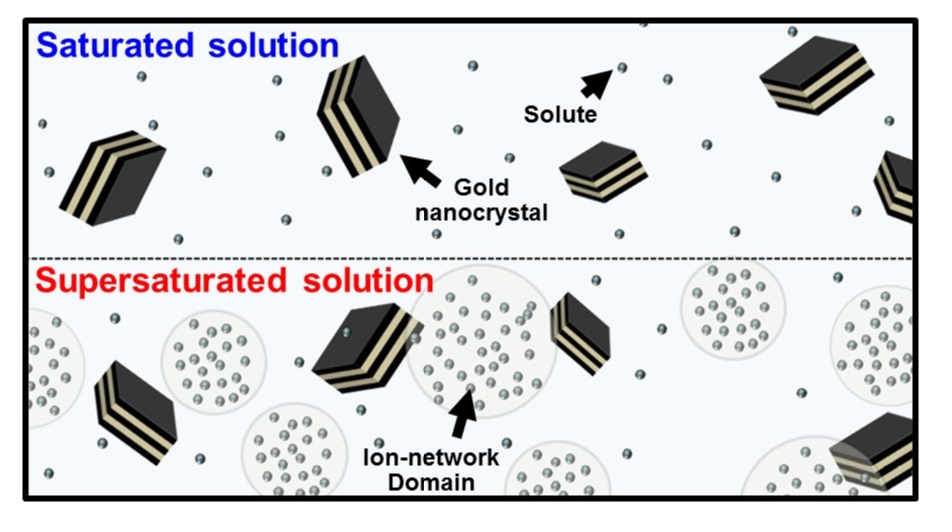Discovery of nanoscale dynamics in supersaturation ion networks High-speed DXT catches new motion in ion networks


An illustration of single-molecule imaging by DXT
Schematic drawing of DXT measurement. Dots indicate the dissolved solute and the circles that surrounded dots express ion networks.
© 2015 Yuji Sasaki.
A joint University of Tokyo and Osaka University group used diffracted X-ray tracking to demonstrate that a supersaturated solution, a precursor state to crystal formation, contains local ion networks that show both exited Brownian Motion and extremely small force fields on the femto-Newton scale. This discovery will improve our understanding of processes such as super cooling and protein aggregation and may lead to ways to control such phenomena in supersaturated solutions.
The precipitation process whereby a solid emerges from a liquid is commonly seen when ice forms from water or experienced when a gallstone forms in the gallbladder. It is an important physical phenomenon that happens everywhere, employed in the fields of food, pharmacology and manufacturing with the production of a wide range of industrial products, and seen in medicine where the abnormal aggregation of protein molecules may result in incurable diseases. It has been theoretically predicted that the process of precipitation starts when crystal nucleation occurs in a supersaturated solution – a state in which a solvent contains more dissolved material that it could normally contain. Recently, ion networks in supersaturated solutions have received much attention as possible molecular precursors to nucleation from solution. However, because ion-networks are presumably highly dynamic entities and their molecular rearrangement processes are considered to be extremely fast and the lack of a suitable high speed observational method, this process had yet to be observed as it took place.
The research group of Prof. Yuji C. Sasaki, graduate student Yufuku Matsushita and Dr. Keigo Ikezaki at the Graduate School of Frontier Sciences and their colleagues has for the first time successfully observed nanoscale ion networks in a supersaturated solution immediately before and at the moment of nucleation, and showed that contrary to expectation the networks are vigorously in motion. From detailed analysis using a high-speed diffracted X-ray tracking (DXT) method employing the KEK Spring-8 synchrotron light source, the group confirmed the existence of an extremely small force field on the femto-Newton scale.
“The observed anisotropic force field discovered using DXT may function as a crystallization trigger,” says Professor Sasaki. He continues, “This will not only improve our understanding of the fundamental mechanisms of the supersaturated state but advance techniques for controlling the supersaturated state and novel materials development applying supersaturated phenomena.”
This research was conducted in collaboration with Dr. Hiroshi Sekiguchi and Dr. Noboru Ohta (Japan Synchrotron Radiation Research Institute), Dr. Kouhei Ichiyanagi (High Energy Accelerator Research Organization), and Yuji Goto (Institute for Protein Research, Osaka University).
Press release (Japanese)
Paper
, "Time-resolved X-ray Tracking of Expansion and Compression", Scientific Reports Online Edition: 2015/12/14 (Japan time), doi: 10.1038/srep17647.
Article link (Publication)
Links
Graduate School of Frontier Sciences
Department of Advanced Materials Science, Graduate School of Frontier Sciences






